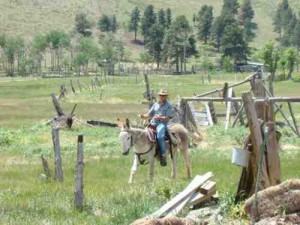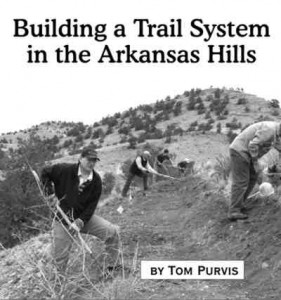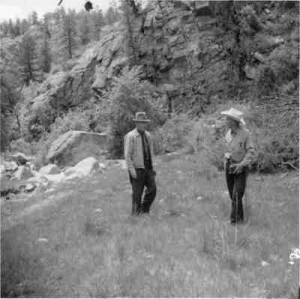Article by John Orr
Water – January 2009 – Colorado Central Magazine
Fryingpan-Arkansas Project debt
The Fryingpan-Arkansas project affects the Arkansas River from stem to stern in Colorado. It moves water from the headwaters of the Fryingpan River under the Great Divide through the Boustead Tunnel to satisfy some of the agricultural needs in the Lower Arkansas Valley and to slake the thirst of Coloradans south of Monument Divide. The project’s facilities are also used for storage for water moved out of basin.
The Southeastern Colorado Water Conservancy District — managers of the Fryingpan-Arkansas project — announced at their November budget meeting that they plan to pay Reclamation $6.4 million next year. That amount should cover the remaining debt on the municipal and industrial (M&I) portion of the 50-year contract.
Southeastern’s board has been concentrating on paying off the municipal and industrial part of the contract since 2000. The strategy was to pay off debt that carried an interest rate (3%) before working on the interest free agricultural share. The district was on the hook for approximately $132 million, $57.9 million for M&I and $73.3 for ag.
Arkansas Basin Roundtable
The roundtable spent most of its December meeting trying to decide what the heck they are supposed to do. Harris Sherman, state director of natural resources, has tasked the basin roundtables with developing a “common vision” of how they want things to look in Colorado in 50 years.
There’s nothing like getting a bunch of farmers and water providers in a room to talk about vision and strategy. Most of the participants are tired of talk and want to see movement on projects. The frustration level is high. The need for sustainable solutions is also high.
Eric Hecox, the manager of the Interbasin Compact Commission, reports that the roundtable is working on updating the list of projects identified in the Statewide Water Supply Initiative, prioritizing projects and updating the database in order to move the best projects forward. According to the Pueblo Chieftain. Jay Winner, general manager of the Lower Arkansas Valley Water Conservancy District, told the group that, “You have to have measurable results.” I’m pretty sure that means “wet” water.
At the November meeting Lake County Commissioner Mike Hickman asked the roundtable to look at a project to mitigate high levels of aluminum in Lake Creek above Twin Lakes. The source of the aluminum is natural. The high levels are impacting the fishery. Stocked fish populations are not self-sustaining. Sources of the aluminum are unknown at this time so that will be the first order of business for the project.
Canon City habitat project
Three chapters of Trout Unlimited, the Canon City Recreation and Park District and Colorado Division of Wildlife have completed a habitat improvement project along a mile of the Arkansas River in town. They placed 400 tons of boulders into the river — at the direction of Fin-Up habitat consultants and the DOW — to provide protected pockets where fish can feed. A fat trout is a happy (and tasty) trout.
Leadville Mine Drainage Tunnel
The Lake County Commissioners lifted their disaster declaration for the Leadville Mine Drainage Tunnel on November 17. Readers may remember that the commissioners reacted to a November 2007 letter from the EPA to the Bureau of Reclamation that raised the alarm about a “catastrophic” failure in the form of a possible release of water that could potentially cause death and destruction along the Arkansas river while polluting it all the way to Lake Pueblo.
Reclamation and the Army Corps of Engineers, however, released reports that contradicted the EPA’s statements.
One result of the controversy was that some of the recommendations for the California Gulch Superfund site’s Operable Unit #6 were implemented. The EPA refitted a monitoring well in the tunnel and started pumping water to Reclamation’s treatment plant. Water levels in the tunnel have been lowered.
Not willing to embrace success at California Gulch, the EPA’s Carol Campbell is now recommending reopening of the OU#6 record of decision (ROD).
Campbell doesn’t think the ROD is “sustainable” and wants to explore capping some waste rock piles as a new alternative. The Leadville Herald Democrat reports that, “Alternatives are considered through a public process to determine a ROD. Reopening this legal document would mean starting this process over to reconsider all the alternatives.” She mentioned that Reclamation wants to get out of the water treatment business.
Round Mountain to lease water to the Upper Ark
Some residents in the Round Mountain Water and Sanitation District are expressing discomfort with the district’s recent agreement to lease water to the Upper Arkansas River Conservancy District for augmentation in Custer County. The Wet Mountain Tribune reports that valley attorney Paul Snyder told the board that he is concerned about the process. The towns of Westcliffe and Silver Cliff were not told about the agreement prior to the board signing off. Round Mountain provides water to the towns so they should have been in the loop, according to Snyder.
The letter signed by the board is not a final agreement but Terry Scanga, Upper Ark’s manager, said that they are ready to take the plan to water court.
Short takes
* If you have an extra $30.5 million the Pueblo Board of Water Works will sell you the Columbine Ditch. This will be the first time the board has sold a major transmountain water right. The ditch — at 11,500 feet 13 miles north of Leadville — brings water from the Eagle River Watershed into the Arkansas Basin.
* It’s curious that no more invasive mussels have been found in Lake Pueblo as of November. Zebra mussels were first sighted at the lake. However, as of November, no live mussels, or live veligers (the larval stage), or “settlers” (mussels about the size of pepper grains) have been found. Officials think that the lake may not provide the kind of habitat necessary. An expert, Renata Claudi of RNT Consulting said, “It is entirely possible there is no adult population in Lake Pueblo,” according to a report in the Pueblo Chieftain.
* The Upper Ark’s first remote station to use the Geostationary Operational Environmental Satellite system is reporting in from the North Fork Reservoir, according to the Mountain Mail. It’s sending data about weather conditions, outflow and the reservoir’s water level.
* So far Alamosa is facing $3.8 million in damage claims from the salmonella outbreak in the spring.
* Congratulations to Wilbur Miller, who was named Conservationist of the Year by the Custer District of the Natural Resource Conservation Service In November.
John Orr follows Colorado water at coyotegulch. Please send story ideas and links to jworr [AT] operamail [DOT] com.


